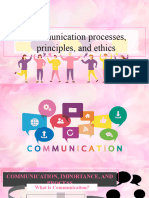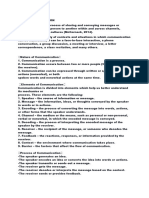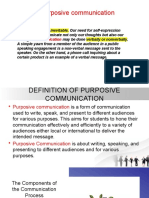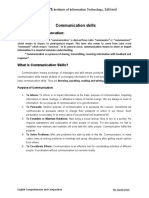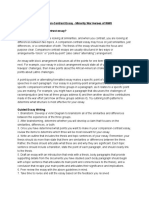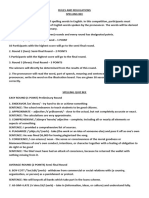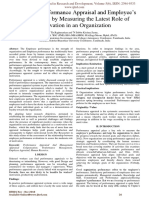Eight Elements of Communication
Communication is the process of sharing information, ideas, or feelings between people. For
effective communication, eight key elements are involved: Source, Sender, Message,
Channel, Receiver, Destination, Feedback, and Context.
1. Source
Meaning: The origin of the information or idea. Without a source, there is nothing to
communicate.
Example:
o In a classroom, the lesson content (prepared by the teacher) is the source.
o In news, the event (like an election or accident) is the source.
Key Point: The source provides the raw material or idea that will be communicated.
2. Sender
Meaning: The person (or group) who takes the information from the source, encodes
it into words, gestures, or symbols, and sends it.
Example:
o A teacher explaining a topic in class.
o A journalist writing a report.
Key Point: The sender plays an active role in shaping how the information is
delivered.
3. Message
Meaning: The actual content being communicated. It can be verbal (spoken/written)
or non-verbal (gestures, signs, symbols, images).
Example:
o “The exam will start on 10th March.” (verbal message)
o A red traffic light (non-verbal message: stop).
Key Point: The message must be clear and structured so the receiver can understand
it.
4. Channel
Meaning: The medium through which the message travels from sender to receiver.
Examples:
o Sound waves (face-to-face speech).
o Telephone, WhatsApp, email (digital channels).
o Television, posters, newspapers (mass communication channels).
Key Point: The choice of channel affects how quickly and effectively the message is
received.
5. Receiver
Meaning: The person or group who receives and interprets the message.
Example:
o Students listening to the teacher.
o A customer reading an advertisement.
Key Point: Communication succeeds only if the receiver pays attention and
understands the message.
6. Destination
Meaning: The final target audience of the message. Sometimes the receiver and
destination are the same, sometimes different.
Examples:
o A teacher tells the class monitor (receiver) to inform the whole class
(destination).
o A manager tells the secretary (receiver) to send a letter to clients (destination).
Key Point: Destination is the end point where the message is meant to reach.
7. Feedback
Meaning: The response or reaction of the receiver to the sender’s message. Feedback
shows whether the message was understood correctly. It can be verbal or non-verbal.
Examples:
o Students nodding, asking doubts, or writing down the exam date.
o A customer clicking “like” on a social media post.
o Silence, frowning, or smiling (non-verbal feedback).
Key Point: Feedback makes communication a two-way process.
8. Context
Meaning: The situation or environment in which communication takes place. Context
includes physical setting, cultural background, emotional atmosphere, and timing.
Examples:
o Announcing results in a classroom is formal context, while telling a joke at a
birthday party is informal.
o Saying “I love you” in a romantic dinner vs. in a group of friends has different
meanings.
Key Point: The same message can change its meaning depending on the context.
Other Elements Associated with the Process of
Communication
Entropy
Meaning: The degree of uncertainty or newness in a message. A message high in
entropy contains more new information, but may also be confusing.
Examples:
o A complex scientific theory (high entropy – new but difficult).
o “Tomorrow is Sunday” (low entropy – predictable and not new).
Key Point: Too much entropy can cause misunderstanding if the receiver lacks
knowledge.
10. Redundancy
Meaning: Repetition or extra information added to reduce uncertainty and help the
receiver understand. It balances entropy.
Examples:
o Teacher repeating instructions twice in class.
o Weather forecast shown on TV and in the newspaper.
Key Point: Redundancy ensures the message is not lost, even if some part is missed.
11. Noise
Meaning: Any disturbance or barrier that distorts the message during communication.
Noise can be physical, psychological, semantic, or technical.
Examples:
o Physical noise: A loudspeaker cracking during an announcement.
o Psychological noise: A student daydreaming and not listening.
o Semantic noise: Using difficult jargon the receiver can’t understand.
o Technical noise: Poor internet connection on a Zoom call.
Key Point: Noise reduces the accuracy and effectiveness of communication.
Complete Example Putting All Together
Source: Exam timetable prepared by the school office.
Sender: The principal announcing it.
Message: “The annual exam will begin on 10th March.”
Channel: School loudspeaker/microphone.
Receiver: Students standing in the assembly.
Destination: The whole school community (students, teachers, parents).
Feedback: Students note it down, teachers nod, some ask questions.
Context: Morning assembly in a formal school setting.














